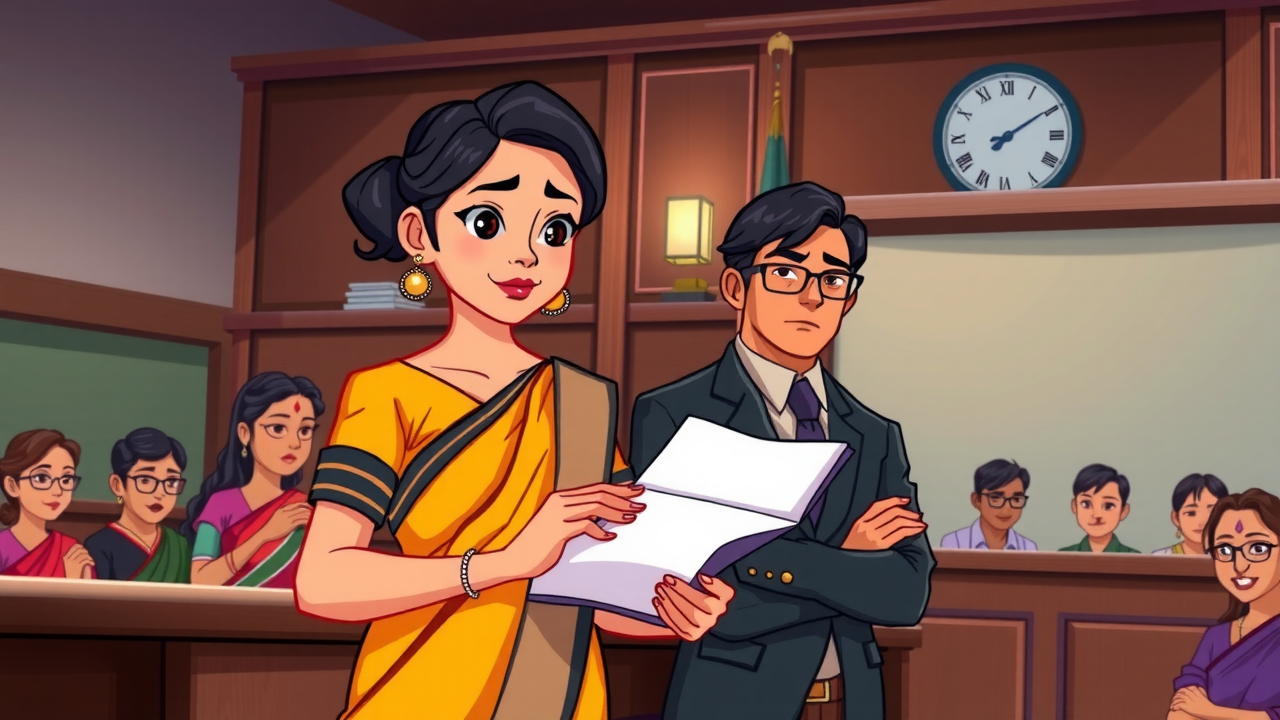The Hindu Marriage Act of 1955 codified marriage and divorce among Hindus, outlining key grounds such as cruelty, adultery, desertion, and mental disorder. Sections 13 and 13B provide a structured legal basis for individuals seeking divorce, ensuring protection for both parties. Landmark cases like

AI that prepares briefs and compliance checklists
Introduction
The Hindu Marriage Act of 1955 marked a significant milestone in the legal framework governing marriage among Hindus in India. This landmark legislation aimed to codify and modernize the diverse customs and practices surrounding marriage, bringing them in line with contemporary societal values. It provided a structured approach to marriage and divorce, ensuring that both parties are protected under the law. Notably, Sections 13 and 13B outline the specific grounds for divorce, including cruelty, adultery, and desertion, thereby offering a clear legal basis for individuals seeking dissolution of marriage.
Understanding the grounds for divorce under this act is crucial, as it empowers individuals to navigate the complexities of marital relationships and seek legal recourse when necessary. Landmark cases, such as V. Bhagat v. D. B. Bhagat[1] and Narayan Ganesh Dastane v. Sucheta Narayan Dastane[2], have further elucidated these grounds, providing essential legal precedents that illustrate the courts’ interpretation and application of the law. Divorce, though often viewed with societal stigma, is a reality for many, and awareness of the legal grounds can provide clarity and support during challenging times.
Legal Framework
In India, Hindu Marriage Act, 1955, was enacted to provide clarity and uniformity to marriage practices, the Act defines marriage, outlines the rights and obligations of spouses, and establishes procedures for divorce.
Key provisions include:
- Section 5, which specifies the essential conditions for a valid Hindu marriage. Under Hindu law, divorce is defined as the legal dissolution of a marriage, allowing individuals to terminate their marital bond.
- Section 13 of the Act enumerates the grounds on which a spouse may seek divorce, including cruelty, adultery, desertion, and mental disorder. Landmark cases such as Naveen Kohli v. Neelu Kohli[3] have provided judicial interpretation of these grounds, reinforcing the legal rights of individuals seeking divorce in a challenging marital context.
Grounds for Divorce
Grounds for divorce under Hindu law are codified in the Hindu Marriage Act, 1955, and include various circumstances under which a spouse can seek legal dissolution of marriage. Key grounds encompass adultery, where one spouse engages in extramarital relations; cruelty, which can be physical or mental; and desertion, defined as the abandonment of one spouse by the other for a continuous period of at least two years. Each ground is subject to specific legal provisions and interpretations, as illustrated by landmark cases that have shaped judicial understanding.
These grounds aim to provide individuals with the legal recourse necessary to escape unsatisfactory or harmful marital situations, reflecting the evolving nature of marital relationships in contemporary society.
1. Adultery
- Adultery is defined under Section 13(1)(i) of the Hindu Marriage Act, 1955, as voluntary sexual intercourse between a married person and someone other than their spouse.
- This act constitutes a valid ground for divorce, as it is seen as a breach of the marital obligation of fidelity. Legal implications include the right of the aggrieved spouse to file for divorce without having to prove further misconduct.
- In the case of Vishnu Dutt Sharma v. Manju Sharma[4], the court held that a single instance of adultery could be sufficient for granting a divorce if it can be proven that it has caused irreparable damage to the marital relationship. The case emphasized the importance of protecting the sanctity of marriage and upheld the right of the innocent spouse to seek dissolution of the marriage.
2. Cruelty
- Cruelty is outlined in Section 13(1)(a) of the Hindu Marriage Act as a valid ground for divorce.
- It can be classified into two categories: physical cruelty, which involves harm or threats of harm, and mental cruelty, which includes emotional abuse, harassment, or conduct that causes psychological distress.
- Courts interpret cruelty as behaviour that makes it unsafe or unreasonable for the aggrieved spouse to continue living with the other.
- In the landmark case of Dastane v. Dastane[5], the court ruled that cruelty need not be physical and can also be inferred from a pattern of behaviour that causes mental anguish. The courts generally assess the totality of circumstances, including the nature of the relationship, to determine whether cruelty has occurred.
3. Desertion
- Desertion is defined under Section 13(1)(b) of the Hindu Marriage Act as the abandonment of one spouse by the other without reasonable cause and with the intention of ending the marital relationship.
- For a claim of desertion to be valid, it must be established that one spouse has left the other for a continuous period of at least two years.
- To prove desertion, the aggrieved party must demonstrate three key elements: the fact of separation, the intention of the deserting spouse to abandon the relationship, and the absence of consent for the separation.
- The case of Vishnu v. State of Haryana[6] highlighted that mere separation is not sufficient; there must be an intention to desert. The court further stated that the burden of proof lies with the party alleging desertion to establish these criteria convincingly.
4. Conversion to Another Religion
- Under Section 13(1)(ii) of the Hindu Marriage Act, 1955, a spouse may seek divorce if the other party converts to another religion and ceases to be a Hindu.
- This provision acknowledges that a fundamental change in religious identity can disrupt the marital bond, especially in Hindu marriages, which are often deeply rooted in religious and cultural practices. The conversion is viewed as a repudiation of the marital relationship, thereby providing grounds for divorce.
- In Sarla Mudgal v. Union of India [7], the court upheld the right of a spouse to seek divorce following the other’s conversion to Islam. The judgment emphasized that the conversion not only alters the personal status of the individual but also affects the rights and duties arising from the marriage, justifying the aggrieved party’s claim for divorce.
5. Mental Disorder
- Mental disorder, as defined in Section 13(1)(iii) of the Hindu Marriage Act, refers to a condition that renders a spouse unfit for marriage.
- This includes any mental illness that significantly impairs one’s ability to engage in marital duties.
- It is crucial for the aggrieved party to demonstrate that the disorder is of a nature that has a lasting impact on the marriage.
- Major mental disorders are listed both as preconditions of marriage and as grounds for divorce.
- Under Hindu Marriage Act, 1955, conditions in respect to mental disorders (Section 5(ii)), which must be met before the marriage is solemnized, are as follows:
- Neither party is incapable of giving a valid consent as a consequence of unsoundness of mind
- Even if capable of giving consent must not suffer from mental disorders of such a kind or to such an extent as to be unfit for marriage and the procreation of children
- Must not suffer from recurrent attacks of insanity
- The Supreme Court in Rita Roy case[8] observed that when there was sufficient evidence for the court to conclude that the slight mental disorder of the wife was not of such a kind and to such an extent that the husband could not reasonably be expected to live with her, divorce could not be granted.
Procedure of Divorce
Filing for divorce under Hindu law is primarily governed by the Hindu Marriage Act, 1955. The process begins when one spouse submits a petition for divorce to the appropriate Family Court. The petition must clearly state the grounds for divorce, such as adultery, cruelty, desertion, or any other applicable reason. After the petition is filed, the court issues a notice to the other spouse, who then has the opportunity to respond. If the case involves mutual consent, both parties can jointly file for divorce under Section 13B of the Act, which simplifies the process and allows for a quicker resolution.
Documentation Required
The documentation required to file for divorce typically includes:
- Marriage Certificate: Proof of the marriage, which is essential for the court to establish the validity of the marital union.
- Address Proof: For both parties, to verify residence.
- Grounds for Divorce: A detailed statement outlining the reasons for seeking divorce.
- Affidavit: A sworn statement affirming the truth of the claims made in the petition.
- Evidence: Any supporting documents or evidence, such as photographs, emails, or messages that substantiate the claims of grounds for divorce.
- Children’s Details: If applicable, information regarding children, including custody arrangements and maintenance.
Role of Mediation and Counseling
- Mediation and counseling play a critical role in the divorce process under Hindu law. Before proceeding with litigation, courts often encourage couples to attempt mediation to resolve disputes amicably. Mediation involves a neutral third party who facilitates discussions between the spouses to help them reach a mutually agreeable solution, particularly concerning issues like child custody and financial support.
- Counseling, on the other hand, aims to address underlying marital issues and can provide a space for couples to discuss their problems with a trained professional. In some cases, counseling may help to reconcile differences, potentially preventing divorce altogether. Both mediation and counseling are designed to minimize conflict, reduce emotional strain, and promote a more amicable separation, which is especially important when children are involved.
Conclusion
Navigating the divorce process under Hindu law involves a structured approach that aims to address the complexities of marital dissolution while safeguarding the rights and well-being of both parties. Understanding the grounds for divorce, the required documentation, and the potential for mediation and counseling is essential for individuals seeking to end their marriage. By promoting amicable resolutions and minimizing conflict, the legal framework encourages couples to consider reconciliation before resorting to litigation. Ultimately, a thoughtful and informed approach to divorce can lead to a smoother transition for all parties involved, particularly when children are part of the equation, fostering a healthier post-marital environment.
[1] (1994) 1 SCC 337.
[2] 1975 SCR (3) 967.
[3] 2006 AIR SCW 1550.
[4] (2009) 6 SCC 379.
[5] (1975) 2 SCC 326.
[6] (2000) 6 SCC 524.
[7] 1995 SCC (3) 635.
[8] AIR 1982 CAL 138.


